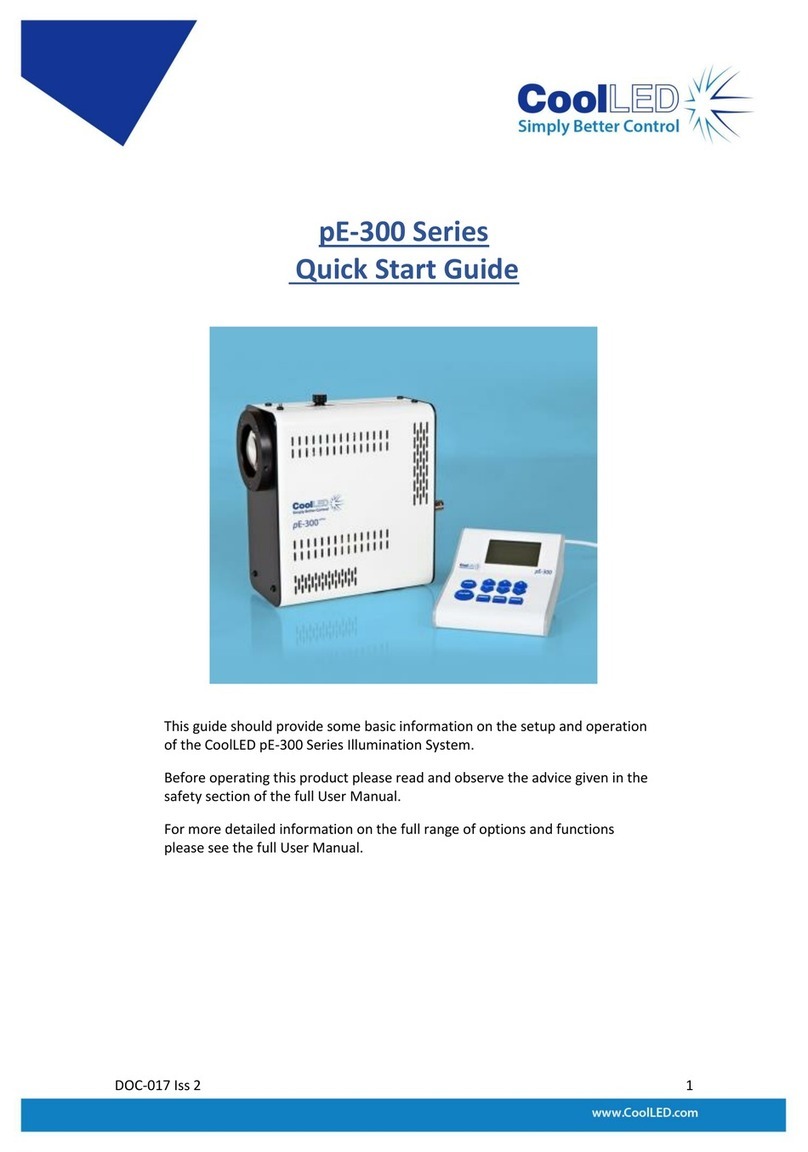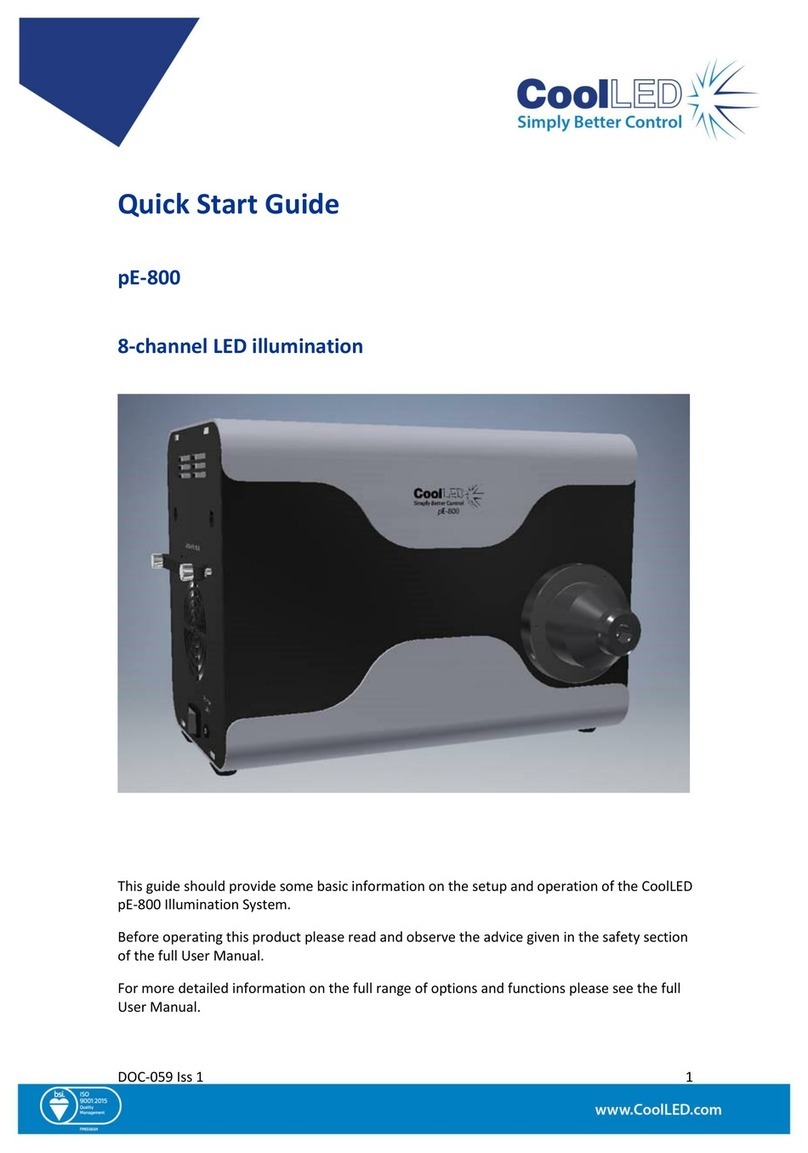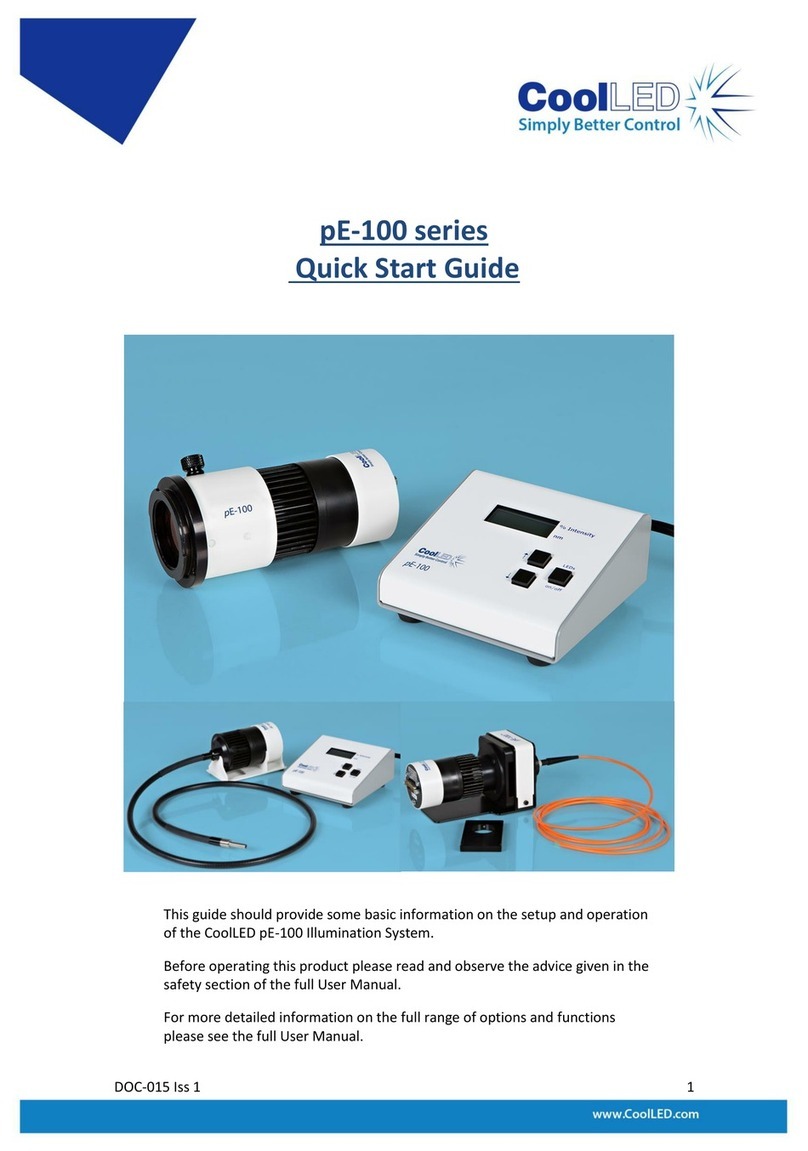i
DOC-075 Iss 1 i
Table of Contents
1. Introduction........................................1
2. Safety.................................................1
3. pE-400 Series Product Range ................2
3.1. Light Source Models .........................2
3.2. Wavelength Variants ........................2
3.3. Light Delivery Variants......................3
4. System Components ............................3
5. Reference Diagrams.............................4
5.1. pE-400 Light Sources ........................4
5.2. pE-400max Light Sources....................7
6. Installation ....................................... 10
6.1 Mounting the Light Source ..............10
6.2. Electrical Connections ....................12
7. Light Source Control .......................... 13
7.1. Manual Control Pods ......................13
7.2. TTL Triggering.................................18
7.3. Software ........................................18
7.4. pE-400max LightBridge.....................18
7.5. Sequence Runner (pE-400max) .........21
8. Excitation Filters (pE-400max) .............. 24
8.1. Excitation Filter Installation............24
9. Optical Adjustment............................ 26
10. Product options and Order Codes ..... 27
11. Warranty and Repairs ...................... 27
12. Compliance ..................................... 28
WEEE ....................................................28
RoHS .....................................................28
13. Recycling......................................... 28
14. Contact Details ................................ 29
15. Product Specifications...................... 29
16. Appendix ........................................ 31
16.1. Boot Load Procedure ....................31


































